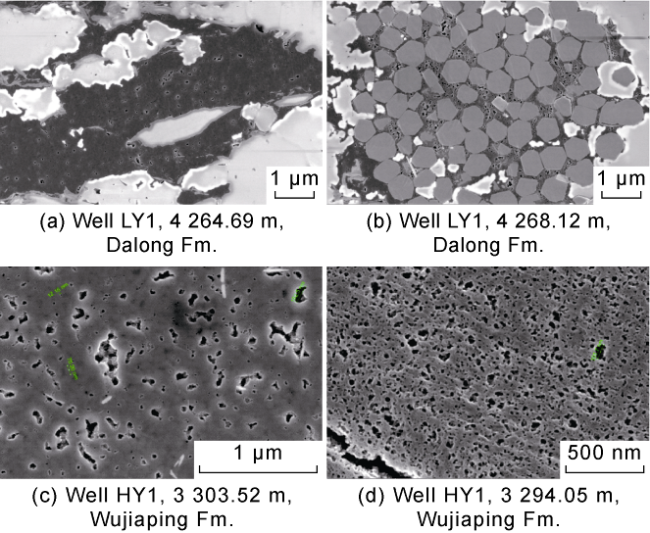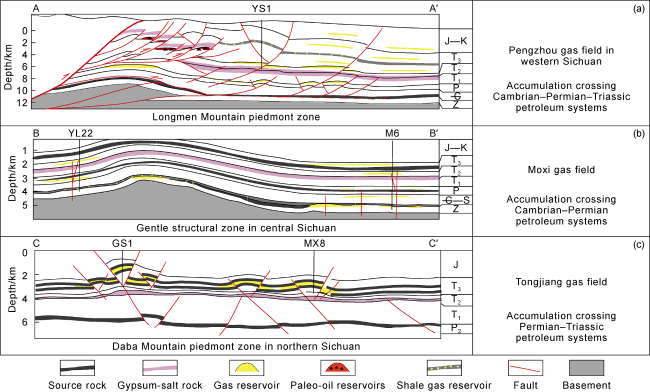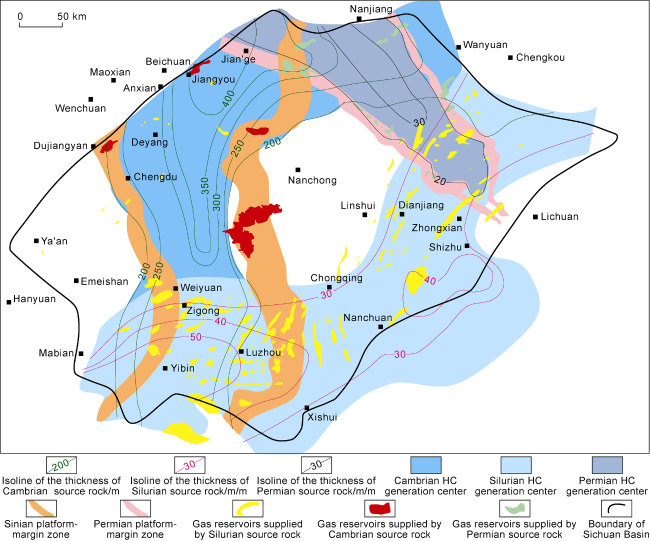The Sichuan Basin is a large multicycle superimposed basin in western China, with multiple sets of source rocks developed in marine strata and abundant oil and gas resources. In recent years, significant progresses have been made in oil and gas exploration in the basin
[1⇓⇓⇓-5]. The exploration process of marine oil and gas in this basin can be traced back to the 1940s, but the large-scale oil and gas discoveries were truly achieved in the 21
st century
[6]. In 2003, the conventional marine natural gas explora-tion in the Sichuan Basin made the first breakthrough in the Kaijiang-Liangping continental shelf in northeastern Sichuan Basin, and large Permian-Triassic biogenic reef flat gas reservoirs were discovered
[7]. Since then, the exploration for large-scale reef flat reservoirs has rapidly extended, and five large gas fields with natural gas reserves of 100 billion cubic meters (Puguang, Yuanba, Western Sichuan, Anyue, and Penglai) have been discovered
[8-9]. Multiple sets of gas-bearing strata have been discovered, including the Sinian Dengying Formation, Cambrian Longwangmiao Formation, Carboniferous Huanglong Formation, Middle Permian Qixia Formation and Maokou Formation, Upper Permian Changxing Formation, Lower Triassic Feixianguan Formation and Jialingjiang Formation, and Middle Triassic Leikoupo Formation, forming four gas-bearing provinces in eastern, western, southern and central Sichuan Basin. Well JY1 achieved shale gas breakthrough in the Wufeng Formation-Longmaxi Formation in 2012, confirming the discovery of the Fuling shale gas field
[10⇓-12], which was built into the first commercially developed shale gas field in 2014 outside of North America. Henceforth, the basin has witnessed a rapid extension of shale gas exploration, with average annual proven reserves of 2.0-6.5 times that of conventional gas. Seven large gas fields with reserves of over 100 billion cubic meters (Fuling, Changning, Zhaotong, Weirong, Weiyuan, Luzhou and Qijiang) have been discovered successively
[13-14]. As of the end of 2022, the cumulative proven natural gas reserves in the marine strata of the Sichuan Basin were 6.29×10
12 m
3, including 3.33×10
12 m
3 marine conventional gas and 2.96×10
12 m
3 unconventional gas, accounting for 53% and 47%, respectively. Over the past 10 years, shale gas production grew from zero to a proportion of 42.8% by 2022, recording a qualitative leap in shale gas exploration and development.


















